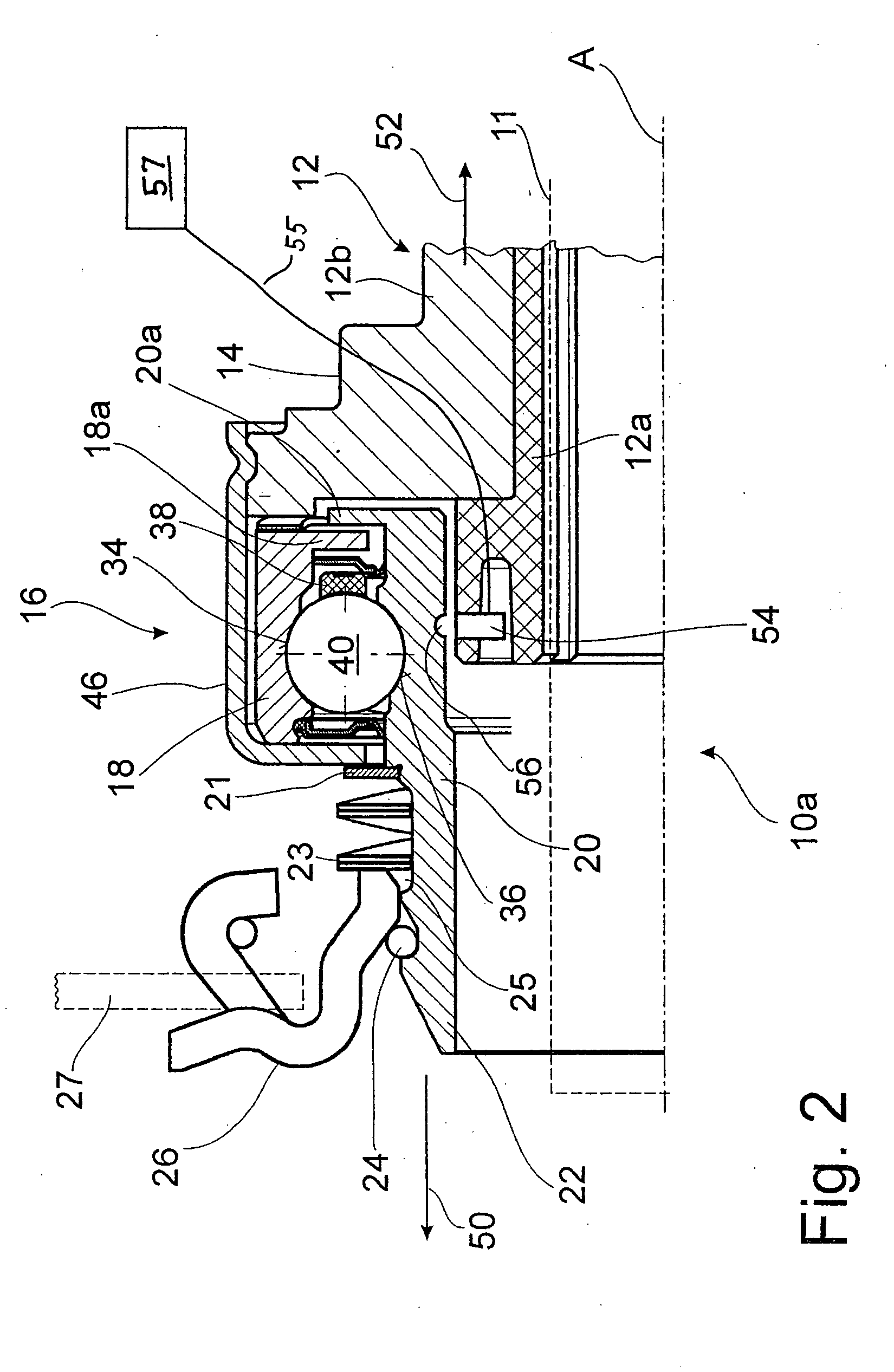Clutch release device for a friction clutch of a motor vehicle with a fail-safe system
- Summary
- Abstract
- Description
- Claims
- Application Information
AI Technical Summary
Benefits of technology
Problems solved by technology
Method used
Image
Examples
Embodiment Construction
[0020]FIG. 1 shows a clutch-release device 10 of the pulled type for actuating a motor vehicle friction clutch (not shown in the drawing). The device includes a sliding sleeve 12, which is made up of two parts, namely, an inner part 12a and an outer part 12b. The sleeve is able to shift its position axially on a guide tube. The sleeve has a radial flange 14, to which is attached a clutch-release bearing 16, designed as an angular-contact ball bearing. The ball bearing 16 has a first, radially outer bearing ring 18, which is stationary with respect to the sliding sleeve 12, and a rotating second, radially inner bearing ring 20 with an axial extension 22 which extends beyond the bearing 16. The inner ring is in working connection by means of a load ring 24 and a release ring 26 with the ends of the tongues of a diaphragm spring 27 (only partially shown in the figure), which represents the release element of the friction clutch to be actuated. To guarantee that the release ring 26 rest...
PUM
 Login to View More
Login to View More Abstract
Description
Claims
Application Information
 Login to View More
Login to View More - R&D
- Intellectual Property
- Life Sciences
- Materials
- Tech Scout
- Unparalleled Data Quality
- Higher Quality Content
- 60% Fewer Hallucinations
Browse by: Latest US Patents, China's latest patents, Technical Efficacy Thesaurus, Application Domain, Technology Topic, Popular Technical Reports.
© 2025 PatSnap. All rights reserved.Legal|Privacy policy|Modern Slavery Act Transparency Statement|Sitemap|About US| Contact US: help@patsnap.com



